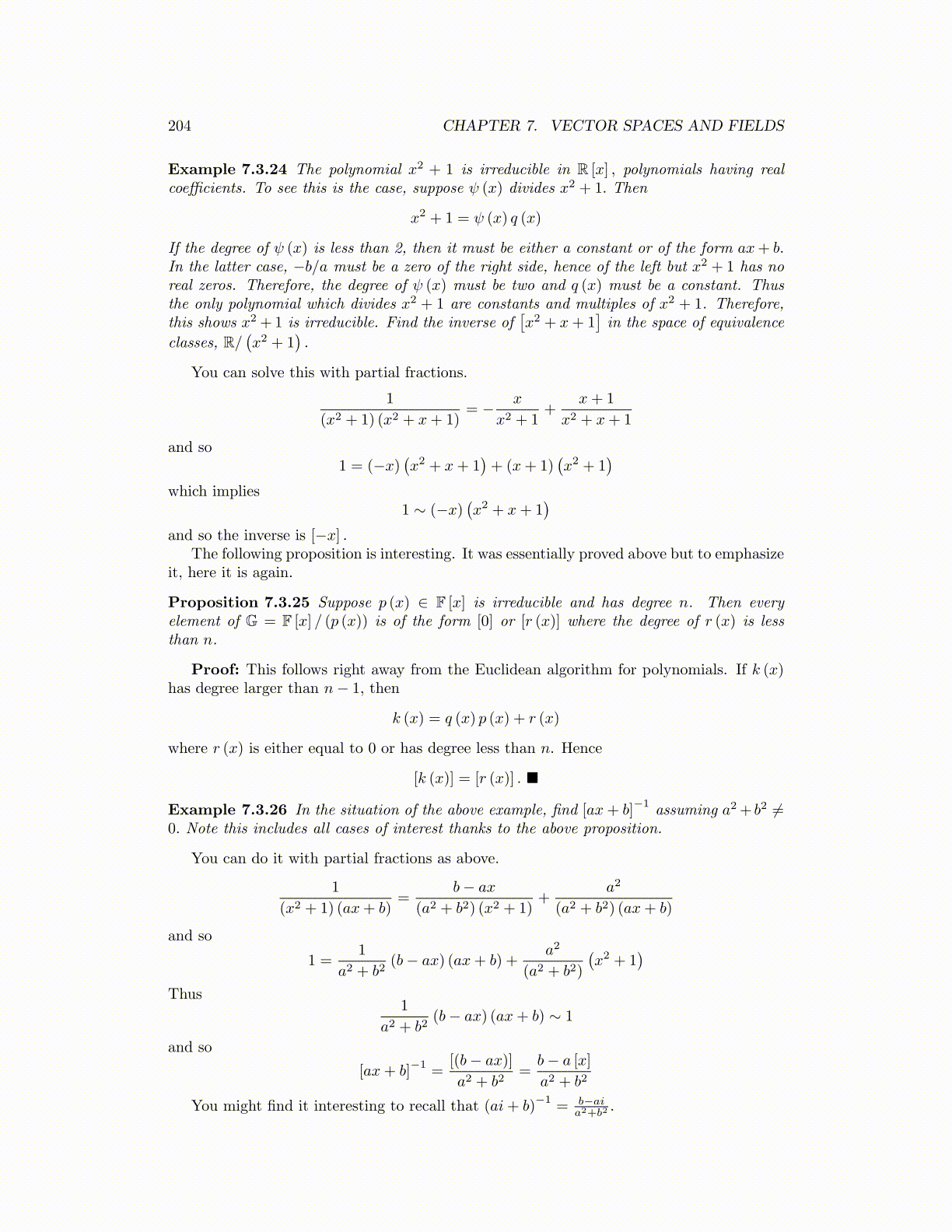
204 CHAPTER 7. VECTOR SPACES AND FIELDS
Example 7.3.24 The polynomial x2 + 1 is irreducible in R [x] , polynomials having realcoefficients. To see this is the case, suppose ψ (x) divides x2 + 1. Then
x2 + 1 = ψ (x) q (x)
If the degree of ψ (x) is less than 2, then it must be either a constant or of the form ax+ b.In the latter case, −b/a must be a zero of the right side, hence of the left but x2 + 1 has noreal zeros. Therefore, the degree of ψ (x) must be two and q (x) must be a constant. Thusthe only polynomial which divides x2 + 1 are constants and multiples of x2 + 1. Therefore,this shows x2 +1 is irreducible. Find the inverse of
[x2 + x+ 1
]in the space of equivalence
classes, R/(x2 + 1
).
You can solve this with partial fractions.
1
(x2 + 1) (x2 + x+ 1)= − x
x2 + 1+
x+ 1
x2 + x+ 1
and so1 = (−x)
(x2 + x+ 1
)+ (x+ 1)
(x2 + 1
)which implies
1 ∼ (−x)(x2 + x+ 1
)and so the inverse is [−x] .
The following proposition is interesting. It was essentially proved above but to emphasizeit, here it is again.
Proposition 7.3.25 Suppose p (x) ∈ F [x] is irreducible and has degree n. Then everyelement of G = F [x] / (p (x)) is of the form [0] or [r (x)] where the degree of r (x) is lessthan n.
Proof: This follows right away from the Euclidean algorithm for polynomials. If k (x)has degree larger than n− 1, then
k (x) = q (x) p (x) + r (x)
where r (x) is either equal to 0 or has degree less than n. Hence
[k (x)] = [r (x)] . ■
Example 7.3.26 In the situation of the above example, find [ax+ b]−1
assuming a2+ b2 ̸=0. Note this includes all cases of interest thanks to the above proposition.
You can do it with partial fractions as above.
1
(x2 + 1) (ax+ b)=
b− ax
(a2 + b2) (x2 + 1)+
a2
(a2 + b2) (ax+ b)
and so
1 =1
a2 + b2(b− ax) (ax+ b) +
a2
(a2 + b2)
(x2 + 1
)Thus
1
a2 + b2(b− ax) (ax+ b) ∼ 1
and so
[ax+ b]−1
=[(b− ax)]
a2 + b2=b− a [x]
a2 + b2
You might find it interesting to recall that (ai+ b)−1
= b−aia2+b2 .